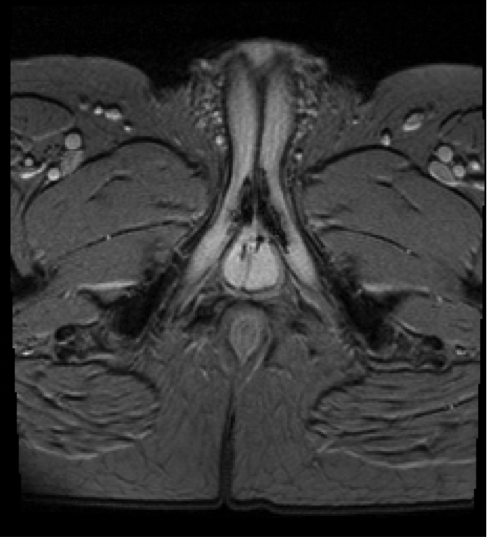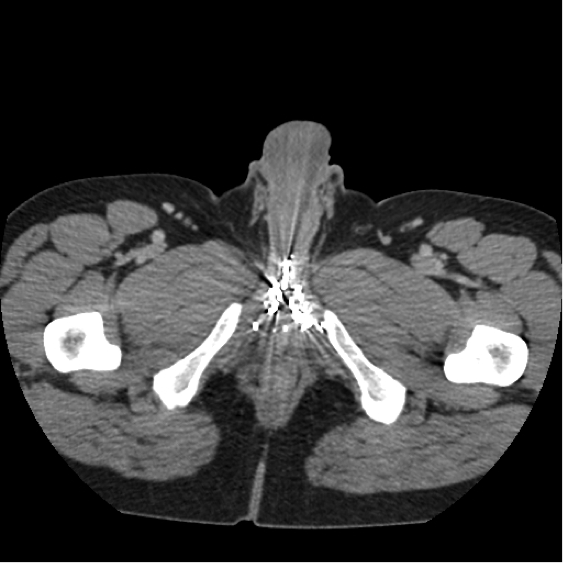Arterio-Venous Malformation of the Bulbar Urethra and Penile Bodies
We treated a very interesting case today. The patient was a 39 year old that was found to have an arterio-venous malformation within the corporal bodies that communicated to the urethra. This was right at the crus of the corporal bodies. The symptoms he initially had were hematuria with erections and sexual activity. He reported that he would get very strong erections and then knew he was going to “blow out” and would develop the urethral bleeding.
The patient underwent embolization of the L pudendal artery with coils and then Onyx embolization followed by a third alcohol embolization. After the last embolization he had ED for several months and was debilitated with chronic penile and perineal pain. He also had worsened urethral bleeding that would start with any activity.
We started the case with cystoscopy and found no visible abnormality in the urethra. We then explored the perineum through a lambda type incision. We found no evidence of the AVM until we dissected the urethra off the corporal bodies. Here we saw a couple of vessels that were necrotic and full of old clotted blood or the Onyx material. We then dissected the urethra completely down to the membranous urethra, leaving the R bulbar artery intact. We took off the bulbospongiosus muscle and carried the dissection around the corporal bodies taking off the ischiocavernosus muscles bilaterally. We then incised into the corporal bodies and found a bunch of necrotic vessels and corporal tissue. We removed all of this and repaired the corporal bodies. We overlaid tutoplast over the suture lines. The last step we took is a tunica vaginalis flap that we put in-between the urethra and the corporal bodies right up to the apex of the prostate.
I had to look of Onyx because the CT scan was so unusual – it looked like there were a thousand metal coils. The material looks like it is an alcohol polymer with a contrast material so it can be seen on fluoroscopy. I hope that this resolves the patient’s pain and problems with bleeding. He will most certainly need a penile prosthesis in the future.
From the Onyx website:
Onyx® is a non-adhesive liquid embolic agent used for the pre-surgical embolization of brain Arteriovenous malformations (bAVM).
Onyx is comprised of EVOH (ethylene vinyl alcohol) copolymer dissolved in DMSO (dimethyl sulfoxide), and suspended micronized tantalum powder to provide contrast for visualization under fluoroscopy.
Here is the patient’s AVM. The MRI really shows the necrosis really well and the CT shows the Onyx material.


